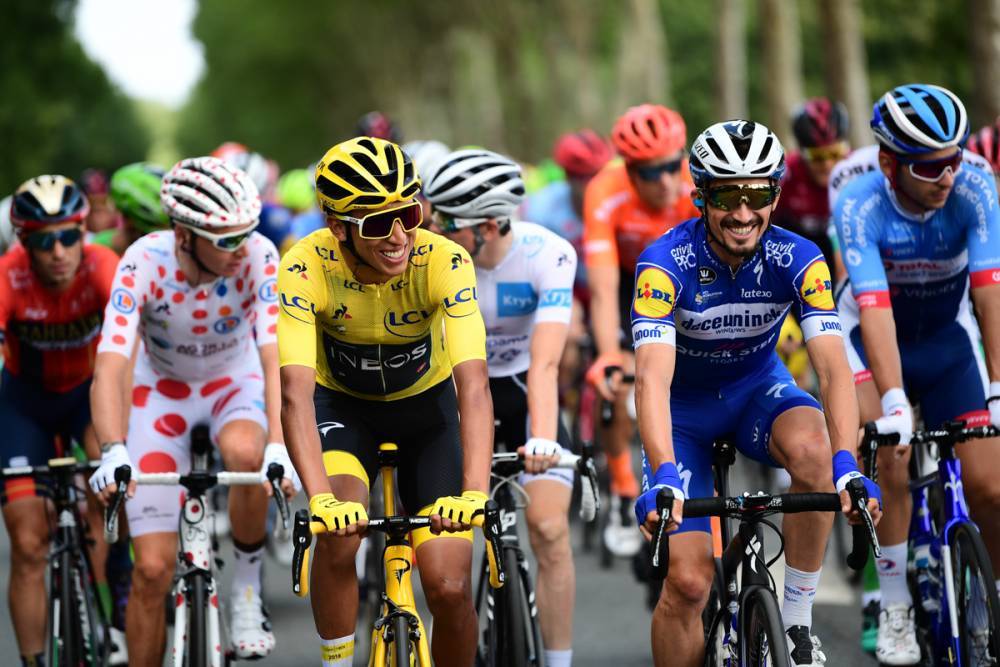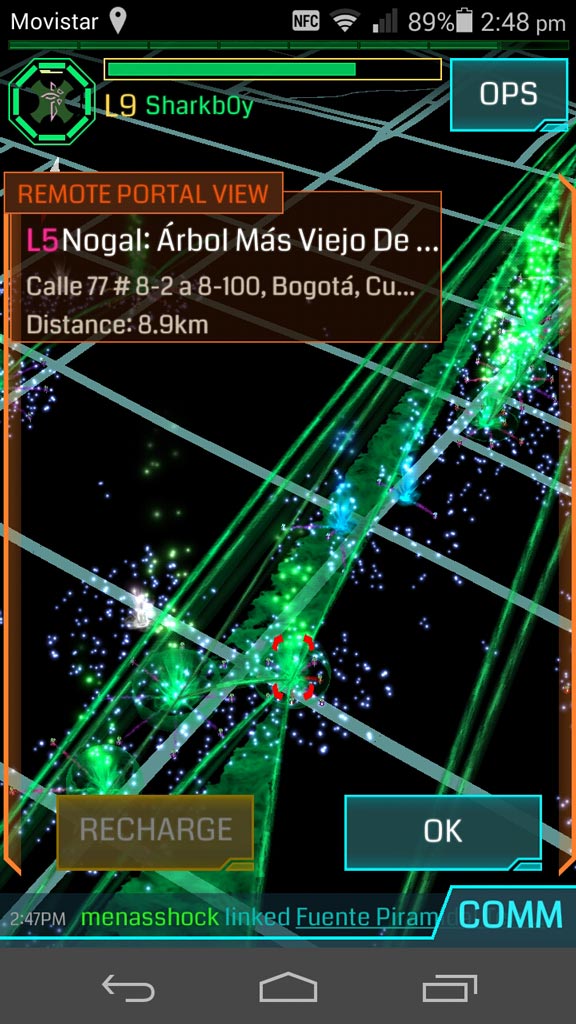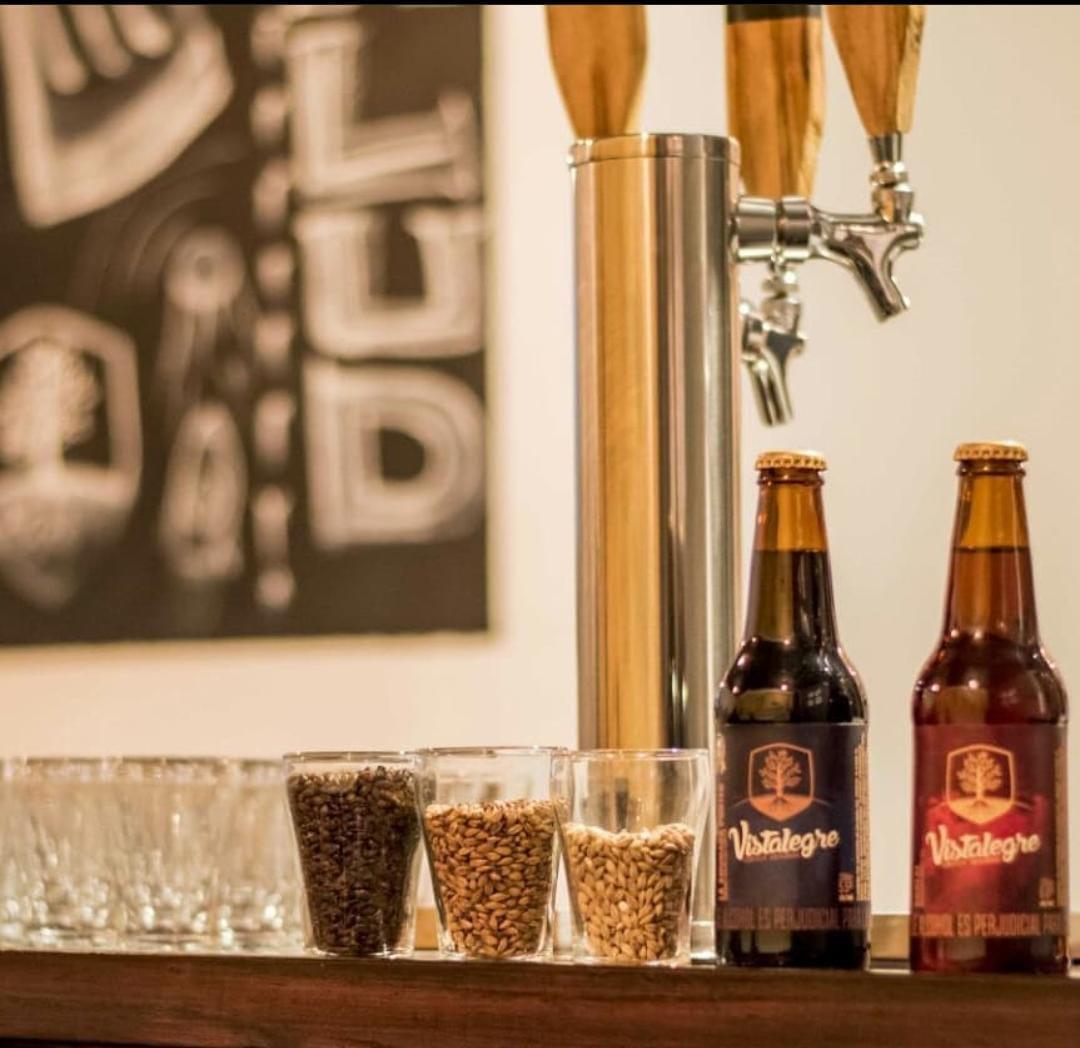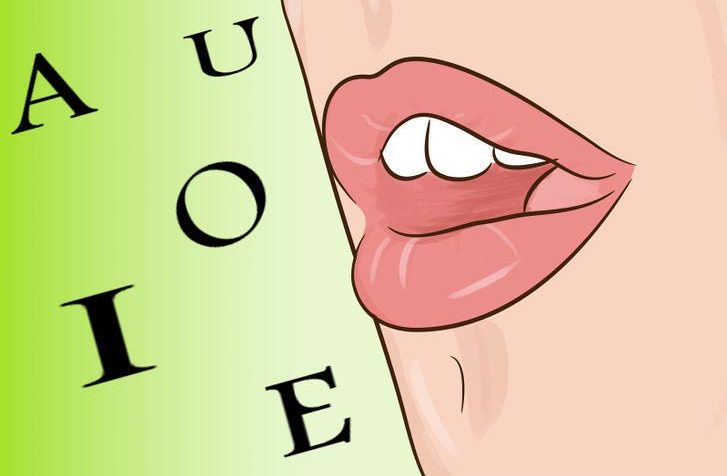
In recent years the vibrant graffiti scene in Bogotá has caught the attention of collectors, and artists are creating galleries like Visaje to show their work.
In Visaje “the walls are thick with many layers of graffiti,” jokes David Niño. And he’s not being metaphorical; since its opening four years ago the work of many artists has graced the gallery’s walls, each before being painted over and replaced by yet another masterpiece. In this way it is almost literally a building made of art, not only covered floor-to-ceiling by murals and canvases on the inside, but with a growing kaleidoscope of colour on the outside, on what was once “the dirtiest corner in Bogotá.”
This eclectic art space, in the barrio of Santa Teresita on the corner of Calle 43 and Carrera 18A, was set up by David along with fellow grafiteros Vogel and Leela. The process was made easier by the fact that the initiative came from the inside the graffiti community – unlike other commercial galleries which act as agents – so was met with enthusiastic support from fellow artists.
Propelling the gallery’s popularity has been the change in “how people see graffiti,’’ says David: it’s no longer seen as a criminal act defiling private property, but rapidly becoming a popular art form.
Related: Graffiti culture in Bogotá, Say it and spray it!
And, therefore, why should it not have a gallery? “We are artists” after all, David points out. Painting the streets and painting a canvas are not mutually exclusive activities; the important thing is that the ideas, and the talent behind the artwork is the same. This is art that can stand alone in any space; whether or not there is a roof above it is immaterial. Taking graffiti “off the streets” like this does not mean stripping it of its essence.
RasTerms – aka James Monk, or James Castillo – is the artist whose masterpiece currently greets the eye upon stepping through the gallery doors. He paid Visaje a visit back in October 2018, and David is enthusiastic in his admiration both for the artist and his work, which is attracting international interest and sales.
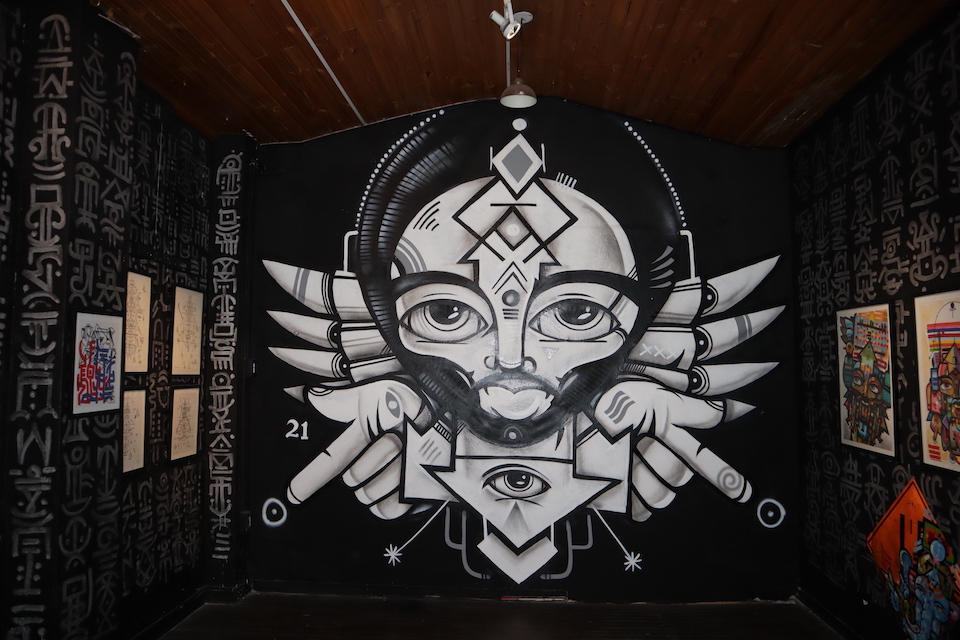
Perhaps contrasting from the stereotypical assumptions about urban artists, he is a very “spiritual” person, David explains as we examine his paintings, the most popular of which have been those painted onto street signs. “Ancestral futurism” is how RasTerms describes his work on his Instagram page, and this apparent contradiction becomes clear with a glance at his designs. They fuse elements of a huge range of ancient cultures and religions, from India, to Africa, to Latin America, whilst at the same time embodying a geometric and futuristic urbanism.
As well as the exhibition section, two rooms dedicated to the present featured artist, a third is dedicated to the sale of urban art. It is stacked high with frames and canvases showcasing the signature style of many of the artists whose works can be spotted around Bogotá, as well as some further afield. The prices, David tells me, are lower than fans might find in other, similar, establishments in Bogotá. But this is no insult to the works available here. Quite the opposite. High prices are simply “not the point of graffiti,” an artform which, at the end of the day, is supposed to be accessible.
Related: Street art remembers the missing
Behind the shop lies the workshop, enthusiastically overseen by David’s dog, Sushi. Piled high with canvases and spray cans, it is just what one might imagine of the creative’s lair. He points out various sections of the wall which have been used by him and others in the same way that other artists might use a sketchbook, testing designs and ideas for stencils and freehand work.
This workshop and the painting carried out within it – much of which is commissioned by individuals – is in part indicative of how it’s not just the public’s attitude towards graffiti that is changing, but that of artists, including David himself. Whilst he talks fondly of times gone by, when he would head out under cover of darkness to add his designs to the city streets, he admits, with a gesture to the various tags climbing the wall of a neighbouring building, that “ruining” the walls of private property in this way is perhaps not the best way to promote graffiti’s artistic and popular reputation. Thus he has traded the “adrenaline rush” of tagging for the different satisfaction he gets from the gallery. Nevertheless, he still takes a single spray can in his bag when he visits another city. “Just so people know I’ve been there.”
In a way, there is something paradoxical about Visaje. It both acts as a permanent space for graffiti, and at the same time highlights its ephemeral nature. Each exhibition is painted in the knowledge that, just like art on the street itself, it has limited time to make its point before it is painted over. But this is perhaps, in both cases, where much of its appeal lies.
Visaje is on the corner of Calle 43 and Carrera 18A, and is open from 2pm-7pm Tuesday to Saturday


